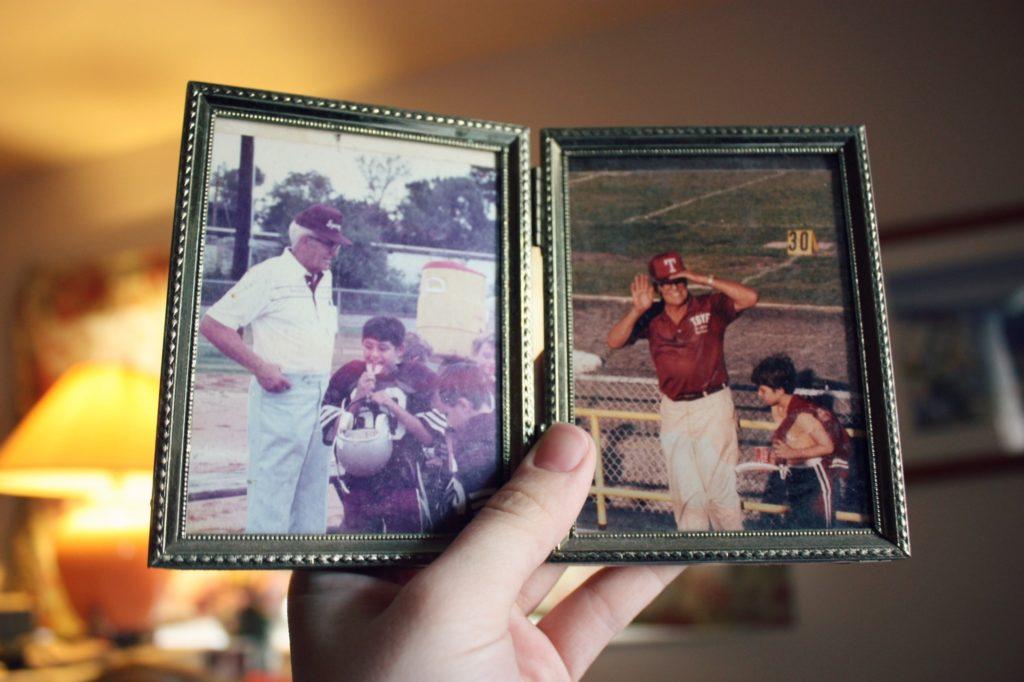10 Strategies to Actively Build Nonprofit Donors Trust
 Trust defines the credibility and legitimacy not only of your organization, but of the entire social benefit sector. Yet too few organizations make the effort to operationalize this construct into their fundraising and marketing planning.
Trust defines the credibility and legitimacy not only of your organization, but of the entire social benefit sector. Yet too few organizations make the effort to operationalize this construct into their fundraising and marketing planning.
You should.
Without donor trust and confidence in philanthropy there’s no future for social benefit organizations.
Donor retention guru Professor Adrian Sargeant has spent 20+ years researching the relationship between trust, philanthropy and continued donor commitment. And he has found, unequivocally, that trust is the essential foundation of the philanthropic relationship.
Ignore this at your peril.
Actively Build Donor Trust
The Donor’s Bill of Rights is a great starting point. But simply using it as a checklist is not enough. Too transactional. I encourage you to go above and beyond. Because the best predictor of future giving is when people feel good.
You can make giving to you a transformational experience. How? By actualizing what you learn here into a series of multi-step plans for:
-
Gift Acknowledgement that Satisfies Donors
-
Donor-Centered Communications that Instill Happiness
-
Useful Content Marketing that Offers Gifts
-
Consistent Branding that Instills Confidence
-
Relationship Fundraising that Creates Meaning and Builds Loyalty
If you take these five steps, implementing the 10 strategies incorporated below, I can guarantee you’ll steadily build trust and make donors happy. They may seem simple, and they are. But honestly ask yourself if you really do these things right now? Trust must be earned, and it can be fragile. So, I’m going to guess you could do better. Please read these action steps with an eye to what you might do to make your donor retention plan – what I prefer to call a “donor love and loyalty plan” – more vigorous. It’s up to you to establish trust and magnetically pull your donors toward you so they never let go.




 What if I told you there’s a teensy little digital upsell that could skyrocket your year-end fundraising results? Would that be of interest?
What if I told you there’s a teensy little digital upsell that could skyrocket your year-end fundraising results? Would that be of interest?

 This Thursday folks in the United States will celebrate what I consider to be the social benefit sector holiday of the year.
This Thursday folks in the United States will celebrate what I consider to be the social benefit sector holiday of the year.
 This year Giving Tuesday is November 28th. So, soon.
This year Giving Tuesday is November 28th. So, soon.








 From time to time, I host guest posts from professionals with niche expertise. There are just some things others know a lot more about than do I, especially when it comes to technology. Today’s article is one of those, from someone who really understands the ins and outs of text messaging and fundraising. Here’s what he has to say.
From time to time, I host guest posts from professionals with niche expertise. There are just some things others know a lot more about than do I, especially when it comes to technology. Today’s article is one of those, from someone who really understands the ins and outs of text messaging and fundraising. Here’s what he has to say. I’m a huge Seth Godin fan, always in awe of the plethora of wisdom he manages to pack into one pithy post. I save them up, building a collection I can draw upon for inspiration as life, personal and professional, pushes in.
I’m a huge Seth Godin fan, always in awe of the plethora of wisdom he manages to pack into one pithy post. I save them up, building a collection I can draw upon for inspiration as life, personal and professional, pushes in.
 You are if your modus operandi is fire fighter.
You are if your modus operandi is fire fighter.


 If you’ve never read management and marketing guru
If you’ve never read management and marketing guru 
 Have you been struggling with whether – and how – to incorporate generative artificial intelligence (AI; ChatGPT) into your work? Or perhaps you’ve been worrying your job will soon be obsolete?
Have you been struggling with whether – and how – to incorporate generative artificial intelligence (AI; ChatGPT) into your work? Or perhaps you’ve been worrying your job will soon be obsolete?


 Early in my career I received a piece of fundraising advice that has stuck with me to this day:
Early in my career I received a piece of fundraising advice that has stuck with me to this day:

 Have you ever received confoundingly terrible customer service? Maybe at a restaurant, hotel, fast food restaurant or retail outlet? It happens all the time and, likely, you’ve thought to yourself: “Why on earth are they treating me like this? It’s so stupid! Don’t they realize I’ll never come here again?”
Have you ever received confoundingly terrible customer service? Maybe at a restaurant, hotel, fast food restaurant or retail outlet? It happens all the time and, likely, you’ve thought to yourself: “Why on earth are they treating me like this? It’s so stupid! Don’t they realize I’ll never come here again?”
 Today a friend, who serves on the board of a struggling local arts organization, asked me what they can do to increase their fundraising. I asked her a few questions; then answered simply: “Have more conversations with people; make more friends.”
Today a friend, who serves on the board of a struggling local arts organization, asked me what they can do to increase their fundraising. I asked her a few questions; then answered simply: “Have more conversations with people; make more friends.”
 Did you ever wonder if there is a foolproof way to communicate with donors?
Did you ever wonder if there is a foolproof way to communicate with donors?
 Annual reports don’t have to be dry as dust. In fact, the most effective ones are not financial reports; they’re a story with the donor at the center. And they inspire action.
Annual reports don’t have to be dry as dust. In fact, the most effective ones are not financial reports; they’re a story with the donor at the center. And they inspire action.
 For many nonprofits, the yearly annual report is often just another task on a very long to-do list. Most charities are juggling a lot—development, program maintenance, fundraising, and more—and the annual report can feel like yet another mandatory routine project. One that often gets handled at the last minute without much intentional care and effort.
For many nonprofits, the yearly annual report is often just another task on a very long to-do list. Most charities are juggling a lot—development, program maintenance, fundraising, and more—and the annual report can feel like yet another mandatory routine project. One that often gets handled at the last minute without much intentional care and effort.
 Okay, I recently let folks know I’d “finagled” a discount for them. After one reader told me the word “finagle” means “to obtain something by devious or dishonest means,” I sent an apologetic “Ruh Roh” email. I received a lot of forgiving feedback. Thank you! Many of you kindly supported my initial use of the word “finagle.” Apparently, there is more than one definition.
Okay, I recently let folks know I’d “finagled” a discount for them. After one reader told me the word “finagle” means “to obtain something by devious or dishonest means,” I sent an apologetic “Ruh Roh” email. I received a lot of forgiving feedback. Thank you! Many of you kindly supported my initial use of the word “finagle.” Apparently, there is more than one definition.


 In 2018, WSJ columnist Christopher Mims observed:
In 2018, WSJ columnist Christopher Mims observed:

 Have you started working on your annual appeal and year-end fundraising plan?
Have you started working on your annual appeal and year-end fundraising plan?
 In
In 
 You’ve got one month before fall fundraising season begins in earnest.
You’ve got one month before fall fundraising season begins in earnest. Babies can teach you the same thing.
Babies can teach you the same thing.

 You bet!
You bet!




 I had a fundraising post all ready to launch today, but I just couldn’t do it.
I had a fundraising post all ready to launch today, but I just couldn’t do it.
 Here’s the deal: When you match people to environments or roles congruent with their skills, knowledge and strengths, they’ll do better.
Here’s the deal: When you match people to environments or roles congruent with their skills, knowledge and strengths, they’ll do better.
 What I have for you is something you can do this week (or you can pick another week on your calendar that isn’t already overfilled with appointments, assignments, meetings and what-not). It’s really simple and really powerful. There’s one catch: you have to put aside 45 minutes/day for five days. If you’re resistant to change, read no further. This post isn’t for you. If, however, you have a hunch you might be able to move from good to great, then… read on (oh, and there’s a little bonus ‘gift’ at the end).
What I have for you is something you can do this week (or you can pick another week on your calendar that isn’t already overfilled with appointments, assignments, meetings and what-not). It’s really simple and really powerful. There’s one catch: you have to put aside 45 minutes/day for five days. If you’re resistant to change, read no further. This post isn’t for you. If, however, you have a hunch you might be able to move from good to great, then… read on (oh, and there’s a little bonus ‘gift’ at the end).





 I’m excited to share three easy tips with you, and the results are measurable. Do these things and you’ll be able to tell if they impact your bottom line!
I’m excited to share three easy tips with you, and the results are measurable. Do these things and you’ll be able to tell if they impact your bottom line!